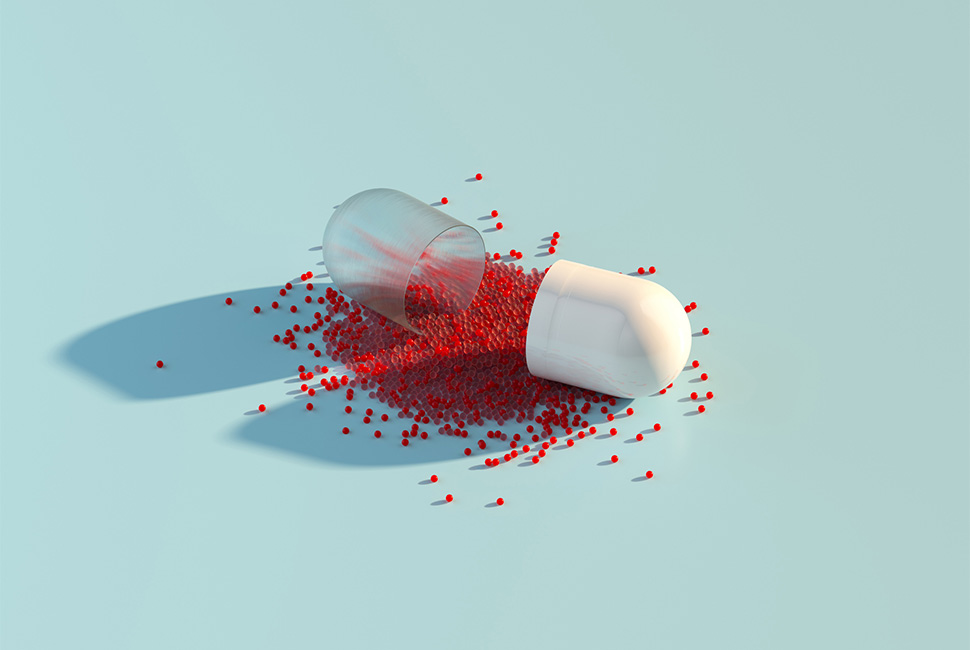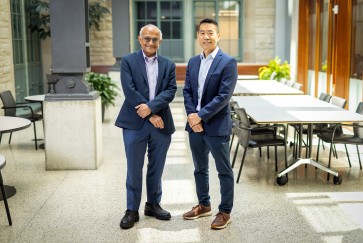The development of modern antibiotics has played a profound role in our ability to treat a range of bacterial infections once considered life threatening. Yet as global access to antibiotics has steadily increased, so too has their overuse, resulting in a worrying rise in antibiotic-resistant bacteria.
In response, an interdisciplinary research group funded by the Northwestern Buffett Institute for Global Affairs was formed, drawing on the expertise of faculty members from Northwestern University’s Feinberg School of Medicine, McCormick School of Engineering and Weinberg College of Arts & Sciences, and in collaboration with experts from Northwestern Memorial Hospital, Lurie Children’s Hospital, the Argonne National Laboratory and Aga Khan University in Pakistan. The group is developing a roadmap to coordinate responses to antimicrobial resistance across academic, political, pharmaceutical and medical institutions.
The group, in partnership with the Center for Pathogen Genomics and Microbial Evolution at the Feinberg School of Medicine’s Institute for Global Health, recently received a grant from the Centers for Disease Control and Prevention to study antimicrobial resistance patterns and their associated clinical implications. The grant will provide the group with $500,000 annually for five years to support their research and will allow the group to build upon their collaboration with Aga Khan University.
Northwestern Now spoke to experts and global working group leaders Erica Hartmann and Mehreen Arshad to learn more about the urgency of this problem and the solutions their group aims to develop.
What main issue are you exploring?
Arshad: Our work focuses on understanding antimicrobial resistance in different healthcare systems across the world. We are trying to better understand how these highly resistant bacteria spread across different communities and patient populations, and also understand what we can do to better treat and control their spread.
Hartmann: The problem that we are facing is that our arsenal of antibiotics is not expanding, and at the same time, pathogens are developing resistance to existing antibiotics. This means that diseases that we used to be able to treat very easily are becoming much more difficult to manage and even fatal. In 2019 alone, there were an estimated 5 million deaths attributed to some form of antimicrobial resistance worldwide, and that number is only expected to increase.
What drives this problem?
Arshad: The key driver of this problem that we’ve seen over the last decade or so seems to be the over-prescription and overuse of antibiotics, not just in the human population, but also in livestock and agriculture. We’ve seen a general rise in unrestricted access to antibiotics occurring in many countries around the world, including in the U.S.
Hartmann: One of the major challenges with fighting antimicrobial resistance is that we are not just dealing with one disease. There are many different pathogens that can develop antimicrobial resistance and many different types of resistance those pathogens can develop, which makes reporting very challenging. Often, you might not even know you have an antimicrobial infection until you try to take an antibiotic and it fails. It’s not something that we actively screen for on a global scale, which makes it difficult to understand the actual scope of the problem.
What special view does your group bring to the table?
Hartmann: Antimicrobial resistance is obviously a medical issue of grave concern to doctors and patients, but it’s also a global phenomenon that requires a lot of modelling to understand how it transmits from person to person and region to region. It’s also a challenge from an evolutionary perspective because these are living organisms that are developing resistance through the process of evolution.
Arshad: Part of the challenge is as a global community we’ve been tackling this issue in bits and pieces. Within our group we have physicians, engineers, sociologists, social scientists, mathematicians and infection control experts. Working in silos will only get you so far, but we hope that by bringing all this expertise together, we are able to come up with more sustainable solutions to address the problem.
What solutions do you hope to achieve?
Arshad: One major problem is that every institution gathers antimicrobial resistance-related data in a different way. This makes it extremely difficult to pull data from across different institutions or regions of the world. To address this, we’ve partnered with Aga Khan University in Pakistan with the hope to work together to develop shared basic metrics on measuring antimicrobial resistance, and by doing so, build a road map for standardizing some of the data collection and curation to make it more accessible.
Hartmann: Our vision is that doctors will eventually have access to information about what types of antimicrobial pathogens they need to be aware of and worried about, and at the same time, that policymakers will be aware of the types of threats people are facing and understand the types of policy actions they can take to respond.
Erica Hartmann is an assistant professor of civil and environmental engineering in the McCormick School of Engineering. Mehreen Arshad is an assistant professor of pediatrics (infectious diseases) in Northwestern Feinberg School of Medicine and attending physician in pediatric infectious diseases at Ann and Robert H. Lurie Children's Hospital of Chicago.


